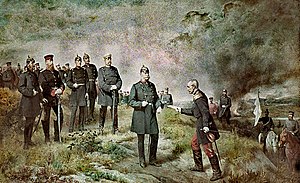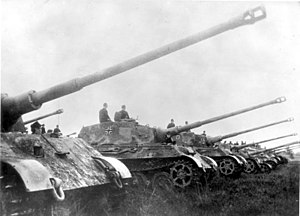This article needs additional citations for verification. (March 2023) |


| History of Germany |
|---|
 |
German militarism was a broad cultural and social phenomenon between 1815 and 1945, which developed out of the creation of standing armies in the 18th century. The numerical increase of militaristic structures in the Holy Roman Empire led to an increasing influence of military culture deep into civilian life. Independent jurisprudence, conscription, but also increasing isolation of soldiers from the rest of society, as a result of the development of barracks at the end of the 18th century, led to this development being particularly strong in Germany. Several dozen German states had their own standing armies by about 1800. Besides the large army of the Kingdom of Prussia, the states of Württemberg, Saxony, Bavaria, the two Hessian states (Electoral Hesse and Hesse-Darmstadt), Hanover, Baden and Münster all had standing armies of up to 35,000 men. The Austrian Empire also played an important role in the development of German militarism up until 1866.
The 19th century saw a combination of militarism and nationalism. Within the then-dominant Prussian Army, reactionary and right-leaning tendencies were highly influential. Increasingly, the army developed to be the "School of the Nation". As a result, millions of young German men experienced a year-long process of socialisation as conscripts or reservists within the institution of the army. The socially well-respected army played a key role in the development of a hierarchical and uniformed society. Several paramilitary structures with the characteristics of mass movements developed in the German-speaking regions of Europe within the 19th and 20th century. During the first half of the 20th century, German militarism reached its peak with two World Wars, which were followed by a consistent anti-militarism and pacifism within Germany since 1945, with a strong non-conformist tendency within subsequent generations.
After 1945, the particular kind of militarism as present in Germany came to be viewed as unique and, in that context, especially negative (see also Sonderweg). The apparent fixation of the German people on their military, combined with a strong belief in the central German state, were viewed as the main causes of Fascism in Germany.
© MMXXIII Rich X Search. We shall prevail. All rights reserved. Rich X Search
